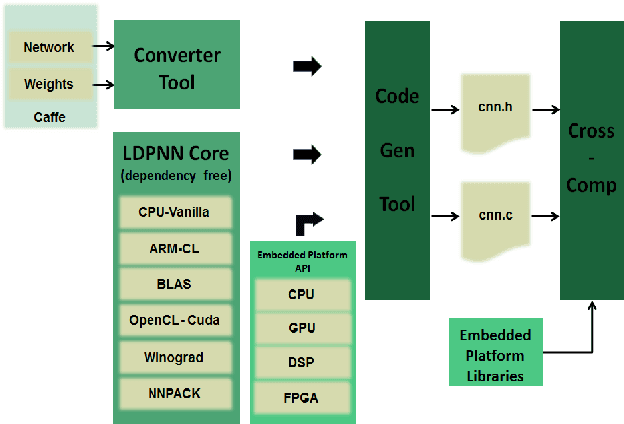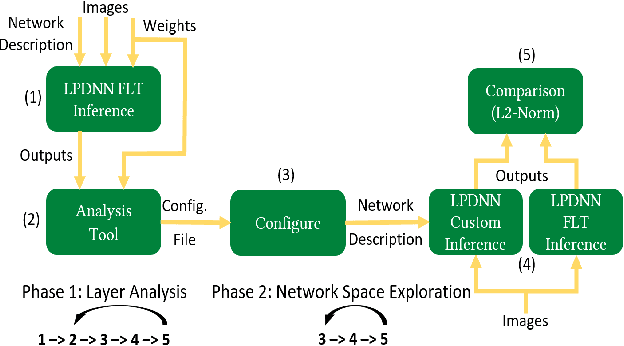QUENN: QUantization Engine for low-power Neural Networks
Paper and Code
Nov 14, 2018



Deep Learning is moving to edge devices, ushering in a new age of distributed Artificial Intelligence (AI). The high demand of computational resources required by deep neural networks may be alleviated by approximate computing techniques, and most notably reduced-precision arithmetic with coarsely quantized numerical representations. In this context, Bonseyes comes in as an initiative to enable stakeholders to bring AI to low-power and autonomous environments such as: Automotive, Medical Healthcare and Consumer Electronics. To achieve this, we introduce LPDNN, a framework for optimized deployment of Deep Neural Networks on heterogeneous embedded devices. In this work, we detail the quantization engine that is integrated in LPDNN. The engine depends on a fine-grained workflow which enables a Neural Network Design Exploration and a sensitivity analysis of each layer for quantization. We demonstrate the engine with a case study on Alexnet and VGG16 for three different techniques for direct quantization: standard fixed-point, dynamic fixed-point and k-means clustering, and demonstrate the potential of the latter. We argue that using a Gaussian quantizer with k-means clustering can achieve better performance than linear quantizers. Without retraining, we achieve over 55.64\% saving for weights' storage and 69.17\% for run-time memory accesses with less than 1\% drop in top5 accuracy in Imagenet.
 Add to Chrome
Add to Chrome Add to Firefox
Add to Firefox Add to Edge
Add to Edge